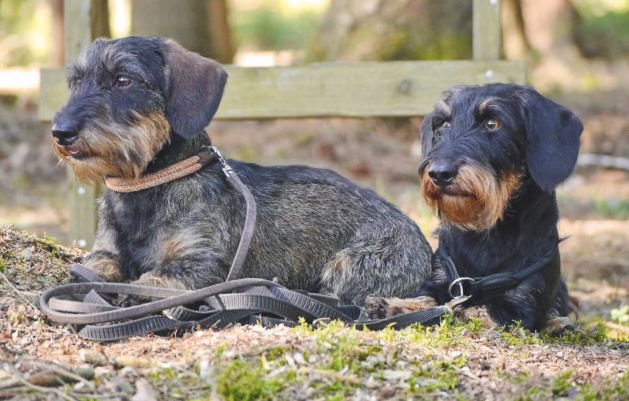Are dachshunds and teckels the same?
- A dachshund is a teckel and a teckel is a dachshund
- Dachshunds are great characters. They are fun, they make great working and family companions, and are a joy to own. (Read: Teckels – the wire-haired dachshund is a sporting sausage dog.)
- They are headstrong and require firm training as puppies but they do have a sensitive nature, especially bitches. An untrained dog is a nuisance; an untrained teckel is a nightmare.
- There are working and showing types
- There are three sizes of dachshund along with three coat types, making a total of nine varieties. The smallest is known in German as kaninchen (rabbit), followed by zwerg (dwarf or miniature) and finally standard.
- The three coat types are: smooth-haired, wirehaired and longhaired. There is often a misunderstanding that the wirehaired is the only working variety of dachshund but this is not the case.
- There are two varieties of wire coat, with one being thick and almost woolly and the other appearing from a distance to be smooth – it is actually a tight wire type known as ‘pin wire’.
- They are a German breed by origin
- In 1840 Queen Victoria and Prince Albert of Saxe-Coburg-Gotha were gifted some top-quality smooth-coated dogs by Prince Edward of Saxe-Weimar.
- Dachshunds have long enjoyed a relationship with the German aristocracy but were brought to Germany by French migrants, where the dogs found favour among gamekeepers and foresters as well as the nobility.
- Dachshund is pronounced ‘daks hund’ not ‘dash hound’)
- Dachshund translates literally as ‘badger hound’, and they were originally bred for the pursuit of badgers below ground.
- Badger hunting by dachshunds continues today in parts of Germany and beyond where it remains a legal and important type of pest control.
- The dachshund has a stout heart but will rarely engage in a fight, prefering to ‘box’ his opponent and keep enough distance to stay out of harm’s way.
- In Europe teckels are much in demand for driven hunts, or drückjagd.
- The dachshund’s nimble nature and low set allows him to avoid the often treacherous tusks of wild boar, an opponent sometimes five times his height and regularly well over 200lb in weight.
- In America breeders have produced excellent teckels, capable of a range of tasks, one of which is working with and flushing game to hawks.
- Wendy Annette Riley, author of The Wisdom of the Simple and a keeper, worker and enthusiast of the breed, wrote in 1948 of dachshunds: ‘businesslike about their hunting as well as tenacious, untiring and essentially honest with such accurate noses that time is rarely wasted on an uninhabited earth or warren’.
- These little ‘badger hounds’ have developed into a multipurpose sporting breed and today can excel in a number of jobs, including flushing pest species and an array of game to guns, as well as retrieving it; blood tracking for injured deer; and despatching vermin such as rats. Many even retrieve ducks from water.
- Today the small size of teckels and their unmatchable scenting ability mean they are fast becoming the dog of choice for the deerstalker in the UK and abroad. Stalkers are finding this small, portable and keen little dog a pleasure to own and work as well as being a family companion.
- Locating an injured deer is second nature to the dachshund, and many are called upon to track animals that have either been injured or are unable to be located after shooting.
- If you are prepared to spend time on training and give the dog the stimulation and exercise it needs, you will find yourself with a fiercely loyal sporting companion who will tire you out long before he is and may even put a rabbit or two in the pot come autumn, search up your shot deer or fetch a duck back from the water while taking up little room on the back seat of your Land Rover.
- Essential health test for dachshunds include: progressive retinal atrophy, osteogensis imperfecta, lafora disease, intervetebral disc disease.





